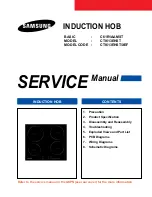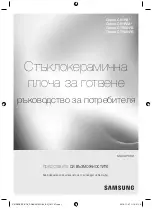
9
Gas Connection
Gas Connection
INSTALLATION
ROOM VENTILATION
An exhaust fan may be used with the appliance; in each case it shall be installed
in conformity with the appropriate national and local standards. Exhaust hood
operation may affect other vented appliances; in each case it shall be installed in
conformity with the appropriate national and local standards.
The use of a gas cooking appliance generates heat and humidity in the room where
it is installed. Proper ventilation in the room is needed. Make sure the kitchen is
equipped with a range hood of appropriate power (400 CFM minimum). Activate
the exhaust fan/range hood when possible. Intensive and continuous use of the
appliance may require additional ventilation, for example, by opening a window.
TYPE OF GAS
This appliance is shipped from the factory for use with natural gas. For use with
propane LP gas, please follow the conversion procedure described on pg. 18. A step
by step conversion procedure is also included with each set of LP gas nozzles.
GAS PRESSURE
The maximum inlet gas supply pressure incoming to the gas appliance pressure
regulator is 34PSI (13,8w. cpr 3,5kPA).
The minimum gas supply pressure for checking the regulator setting shall be at least
1˝ w.c (249 Pa) above the inlet specified manifold pressure to the appliance (This
operating pressure is 4˝ w.c. (1.00kPa) for Natural gas and 11˝ w.c. (2.75 kPa) for
LP gas.
Gas cooktop requires 1”- 6” side wall spacing above the counter height for proper
combustion. Please review specific model installation instructions for required dimen-
sions. 30 inches between the cooktop and bottom of the cabinet above. 0.25 inches
for sides below countertop height.
NOTE
: Please consult your local building codes for variations with installation.















































